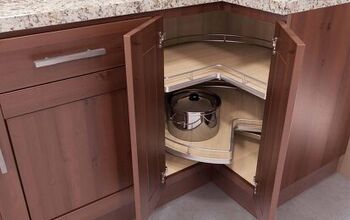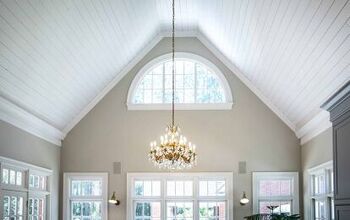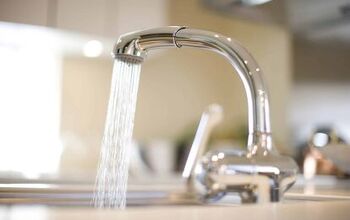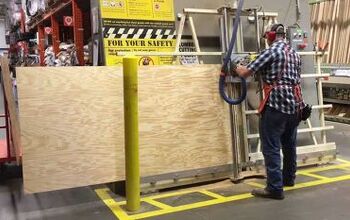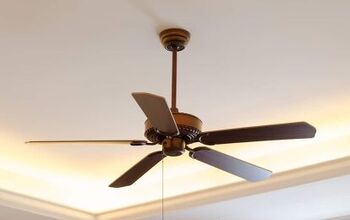Are Air Plants Good Houseplants? (And How To Keep Them Alive)

Tillandsia, or air plants as they are more commonly known, are some of the most fascinating plants on the planet. Unlike the vast majority of plant species, air plants don’t need soil to grow. They also soak up water from humid and misty air. Since these prehistoric-looking specimens don’t require soil or regular watering, you might wonder if air plants make good houseplants.
An air plant make a fantastic low-maintenance houseplant because it doesn't require regular watering, is an excellent natural air purifier, and helps to absorb humidity already in the home. These plants don’t require soil, making them a clean option, and they just need some direct or indirect natural light to thrive. They are great hanging plants, fit in small spaces, and have far fewer pest issues than other houseplants.
Choosing the perfect houseplant is challenging, especially since every home has its own specific climate. When you want to add a dynamic, unique, and low-maintenance houseplant to your home, you should consider an air plant. If you have never heard of these plants or are wondering if they are easy to care for indoors, keep reading. Below is a list of all the reasons why air plants make good houseplants, as well as top tips for keeping them alive in your home.
Eight Reasons Air Plants Make Great Houseplants
1. They Are Easy To Water And Care For
Air plants are very low-maintenance plants, which is one of the top reasons why they are great for the home. Air plants require almost no attention. They absorb moisture from the air, so as long as you have them in a humid spot, they can take care of themselves.
Air plants also don’t require soil, and instead absorb nutrients from the air as well. This means that while they benefit from occasional fertilizer, it isn’t a constant requirement like it is for other plants.
2. They Make Great Hanging Plants
Air plants are ideal for hanging terrariums, which is perfect for anyone who wants to use plants as living decor. There are tons of stunning hanging glass terrariums you can purchase and decorate with stunning air plants.
Creating a hanging terrarium is a fun DIY project, and the result is often a very elegant mini ecosystem. Since these plants don’t need dirt, these hanging terrariums also look tidy.
3. These Plants Are Known For Their Resilience
Many air plants are known for their resilience and adaptability. They can survive longer than most plants without regular watering, which makes them ideal for those who aren’t always on top of their plant care.
You can leave them alone while you take short vacations, and even move them to various sunny locations in your home, and they should continue to thrive. While they aren’t invincible, they are more forgiving than some other common houseplants.
4. Air Plants Fit In Small Spaces
If you are looking to add some pops of natural color and life to small nooks and shelves in your home, air plants are a great option. These plants grow very slowly over time, and many air plants can easily fit in the palm of your hand. This makes them ideal if you are looking to fit an indoor plant in a small space.
5. These Plants Are Natural Air Purifiers
Air plants are small compared to ferns and pothos houseplants, but these tiny plants are excellent air purifiers. They absorb lots of carbon dioxide and release oxygen into any room you have them in.
Air plants can also absorb other toxins from the air, including benzene and formaldehyde. This makes them an ideal plant for those looking to purify the inside air naturally.
6. Some Varieties Have Beautiful Flowers
There are hundreds of air plant species that grow in various temperate zones throughout the world. Many varieties have a unique look to them. Some air plant varieties even have vibrant flowers that bloom from time to time.
If you are looking for a low-maintenance houseplant that blooms from time to time, find a flowering air plant that will thrive in your home.
7. Air Plants Help Control Humidity
If you have a humid home, air plants can be a great natural option to help remove some of the wet air. Since air plants absorb moisture from the air, they are a great plant for bathrooms, kitchens, and other rooms that tend to be more humid than others.
While one air plant won’t make much of a difference in lowering the humidity in a large home, having several air plants in humid areas will help dehumidify the room, and it will also make your plants happy.
8. They Have Fewer Pest Issues Than Other Houseplants
Some houseplants suffer from various pest issues, which can kill them and also cause insect problems in your home. Air plants don’t require soil, and they have far fewer natural pest problems than many other houseplants. They are also quite resilient, which allows them to fight off insect problems as well.
Top Tips For Keeping Air Plants Alive Indoors
1. Choose A Location With Humidity
Since air plants like to absorb moisture from the air, it’s a wise idea to stage them in a humid area in your home. Air plants tend to thrive in bathrooms with natural light or near kitchen windows.
You can grow air plants in a dry home, but you need to remember to spritz them or find alternative methods to water them.
2. Air Circulation Is Critical For Air Plant Health
Quality air circulation is crucial in any home. It prevents mold and other issues, and good air circulation also keeps your air plants happy. Stagnant wet air can cause problems with your air plants, including fungal issues.
Remember to keep your ceiling fans flowing and windows open on nice days to prevent stagnant wet air and the many problems that come with it.
3. Ensure They Have Enough Natural Light
Air plants are resilient and easy to care for, but they need light to survive. With more than 600 types of air plants, it should come as no surprise that some need more light than others. Even if you opt for a variety that doesn’t need much light, you should still find a spot where your air plant will get some direct or indirect sunlight each day.
4. Know The Signs That Your Air Plant Needs Water
Since climate-controlled homes are less humid than most outdoor environments, you will have to water your air plant from time to time. If your plant starts to change color to brown, shrivel up, or curl at the tips, then it needs water.
Know the signs that your air plant is dehydrated, and address them quickly to avoid drying out your plant so much that it dies.
5. Understand The Best Ways To Water Your Air Plants
Air plants shouldn’t be watered like most other plants. Instead, the preferred method for watering most air plants is to soak them in room temperature water once every week or so.
Soak the plants for thirty minutes, and then allow them to dry before placing them back in their terrarium or dish. This should keep the vast majority of air plants properly hydrated indoors.
6. Buy The Right Type Of Air Plants For Your Home
When you decide to bring air plants into the home, remember that there are more than 600 species you can choose from. In addition to selecting air plants based on size, flowers, and overall visual appeal, you should also choose air plants that do well indoors.
Opt for air plants that require minimal light and have proven resilience and adaptability.
Final Notes On Using Air Plants As Houseplants
Air plants are fascinating and unique plants that can add oxygen and aesthetic appeal to any room in your home. These plants absorb moisture from the air and don’t need soil to survive, which makes them very low-maintenance. They fit in small spaces, and some varieties even have beautiful flowers. Air plants also absorb toxins from the air, making them beautiful and low-maintenance air purifiers.
Related Guides:
- Do Houseplants Improve Indoor Air Quality?
- Why Won’t My Houseplants Grow?
- 12 Tiny Indoor Plants That Are Ideal For Small Spaces

Tom Gaffey is an expert writer who currently resides in Washington D.C. Tom has a passion for real estate and home improvement writing, as well as travel and lifestyle writing. He lived the last twelve years in Hawaii where he worked closely with luxury resorts and event planners, mastering his knowledge of aesthetics and luxury products. This is where he found his passion for home improvement and a keen interest in DIY projects. Currently, Tom resides in Washington D.C, and also working on his debut fiction novel.
More by Tom Gaffey












